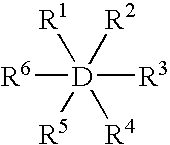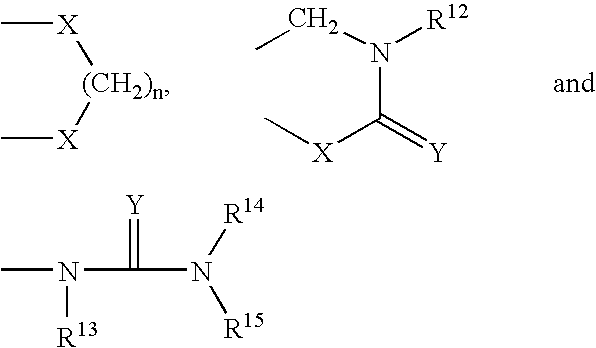Functionalized higher diamondoids
a technology of diamondoids and secondary carbons, applied in the field of functionalized higher diamondoids, can solve the problems of difficult substitution at the secondary carbons of higher diamondoids, difficult separation of complex product mixtures and/or isomers, and impossible reaction of quaternary carbons
- Summary
- Abstract
- Description
- Claims
- Application Information
AI Technical Summary
Problems solved by technology
Method used
Image
Examples
example 1
[0278] This Example has seven steps (see Flow Chart in FIG. 3).
[0279] Step 1. Feedstock selection
[0280] Step 2. GCMC assay development
[0281] Step 3. Feedstock atmospheric distillation
[0282] Step 4. Vacuum fractionation of atmospheric distillation residue
[0283] Step 5. Pyrolysis of isolated fractions
[0284] Step 6. Removal of aromatic and polar nondiamondoid components
[0285] Step 7. Multi-column HPLC isolation of higher diamondoids
[0286] a) First column of first selectivity to provide fractions enriched in specific higher diamondoids.
[0287] b) Second column of different selectivity to provide isolated higher diamondoids.
[0288] This example is written in terms of isolating several hexamantanes.
[0289] Step 1--Feedstock Selection
[0290] Suitable starting materials were obtained. These materials included a gas condensate, Feedstock A and a gas condensate containing petroleum components, Feedstock B.
[0291] Step 2--GC / MS Assay Development
[0292] Feedstock A was analyzed using gas chromatograp...
example 2
[0310] Bromination of Higher Diamondoid-Containing Feedstock
[0311] Bromination of a feedstock containing a mixture of higher diamondoids was carried out. The feedstock was derived from Feedstock B described in Example 1. A sample of Feedstock B was subjected to atmospheric distillation as set forth in Example 1, Step 3. At the completion of the distillation, a holdup fraction was obtained by rinsing the column. The holdup was fractionated on a Whatman M40 10 / 50 ODS preparative scale HPLC column using acetone as mobile phase.
[0312] A fraction containing all of the tetramantanes including some alkyltetramantanes and hydrocarbon impurities was obtained. The composition of this fraction is shown in FIG. 21. The tetramantanes were identified by mass spectra and retention times.
[0313] This fraction (about 20 mg) was mixed with excess anhydrous bromine (dried with concentrated H.sub.2SO.sub.4) in a 10 mL round-bottom flask. While stirring, the mixture was heated in an oil bath for about 4....
example 3
[0319] Hydroxylation of Brominated Tetramantanes
[0320] The brominated tetramantanes of Example 2 are mixed with about 1 mL of 0.67 N hydrochloric acid and 5 mL DMF. The resultant mixture is stirred at reflux temperature for about 1 hour. The mixture is then neutralized and the solvent was evaporated. The resulting product mixture was characterized by GC / MS analysis.
[0321] FIG. 25 shows the total ion chromatogram (TIC) of the hydroxylation product of Example 3.
[0322] FIG. 26 is the mass spectrum of a monohydroxylated tetramantane with GC / MS retention time of 15.329 minutes.
[0323] Other mass spectrum showed a monohydroxylated methyltetramantane with GC / MS retention time of 15.281 minutes and a monohydroxylated dimethyltetramantane with GC / MS retention time of 15.925 minutes.
PUM
| Property | Measurement | Unit |
|---|---|---|
| Temperature | aaaaa | aaaaa |
| Temperature | aaaaa | aaaaa |
| Temperature | aaaaa | aaaaa |
Abstract
Description
Claims
Application Information
 Login to View More
Login to View More - R&D
- Intellectual Property
- Life Sciences
- Materials
- Tech Scout
- Unparalleled Data Quality
- Higher Quality Content
- 60% Fewer Hallucinations
Browse by: Latest US Patents, China's latest patents, Technical Efficacy Thesaurus, Application Domain, Technology Topic, Popular Technical Reports.
© 2025 PatSnap. All rights reserved.Legal|Privacy policy|Modern Slavery Act Transparency Statement|Sitemap|About US| Contact US: help@patsnap.com



